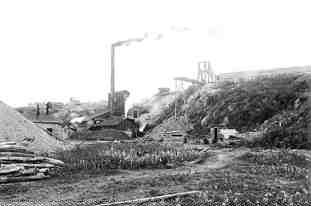In 1911, Dr. Michael Steele, president of Swastika Mining Co. and a native of Tavistock, Ont., southeast of Stratford, took a trip to the small gold mining town of Swastika in northern Ontario with a local photographer. The cameraman stepped into the village to record its daily activities.
He must have been a busy fellow. Once the trip ended, he had more than enough material to create 4,000 glass negatives from his work.
Today, the collection is in the hands of William Gladding, editor and publisher of the Tavistock Gazette, the town’s weekly newspaper. Gladding is selling prints from the collection to raise money for the local Rotary Club.
“I don’t own the Lemp collection,” Gladding explains. “I’m sort of the guardian. All the money raised through the sale of these pictures is done through the Rotary Club, and any profits go back into the community.”
The negatives range in size from 8×10, to 5×7, 4×5, 3×4 and 2×3. A 5×7 print sells for $15.
An excerpt from the Tavistock Gazette, dated Oct. 19, 1911, describes what was happening in Swastika:
“Last week, a party composed of Dr. M. Steele and Mr. A.T. Bell of Tavistock, the Consulting Engineer and other directors of the Swastika Mining Co., took a trip up to that country to look over the property. . . . The old buildings have been replaced with new and more up-date ones, including a power house, a machine shop, a bunk-house that will accommodate 60 men, and a new office. A 3-compartment shaft has just been completed to the 200-foot level. . . . The new town of Swastika has been booming this summer. The first building was erected last May, and now there is a town of 400 people, with at least 1,000 more scattered through the bush.
The late Carl Seltzer, one of the town’s citizens, stumbled on the extensive collection in the attic of a local photo gallery while researching his centennial book Fact & Fantasy, A History of Tavistock & District. He stressed the value of these negatives to Gazette publisher C.R. Gladding, who in turn urged his son, William, to acquire them from local photographer Leonard Lemp.
In 1977, Gladding acquired the collection from Lemp, who was selling his business.
Gladding, and some friends, removed the negatives from their 75-year rest in the Lemp attic and began cataloging the collection. A hardcover book, Crossroads in Time: A Pictorial History of Tavistock (1890-1920) — The Lemp Studio Collection, was published in June 1998 to commemorate the 150th anniversary of the founding of the village. The project was funded by the Rotary Club.
Prints from original glass negatives contained in the collection can be purchased by writing to William Gladding at 119 Woodstock St. S., Box 70, Tavistock, Ont. NOB 2RO, or by calling (519) 655-2341.


Be the first to comment on "Swastika prints available to public"